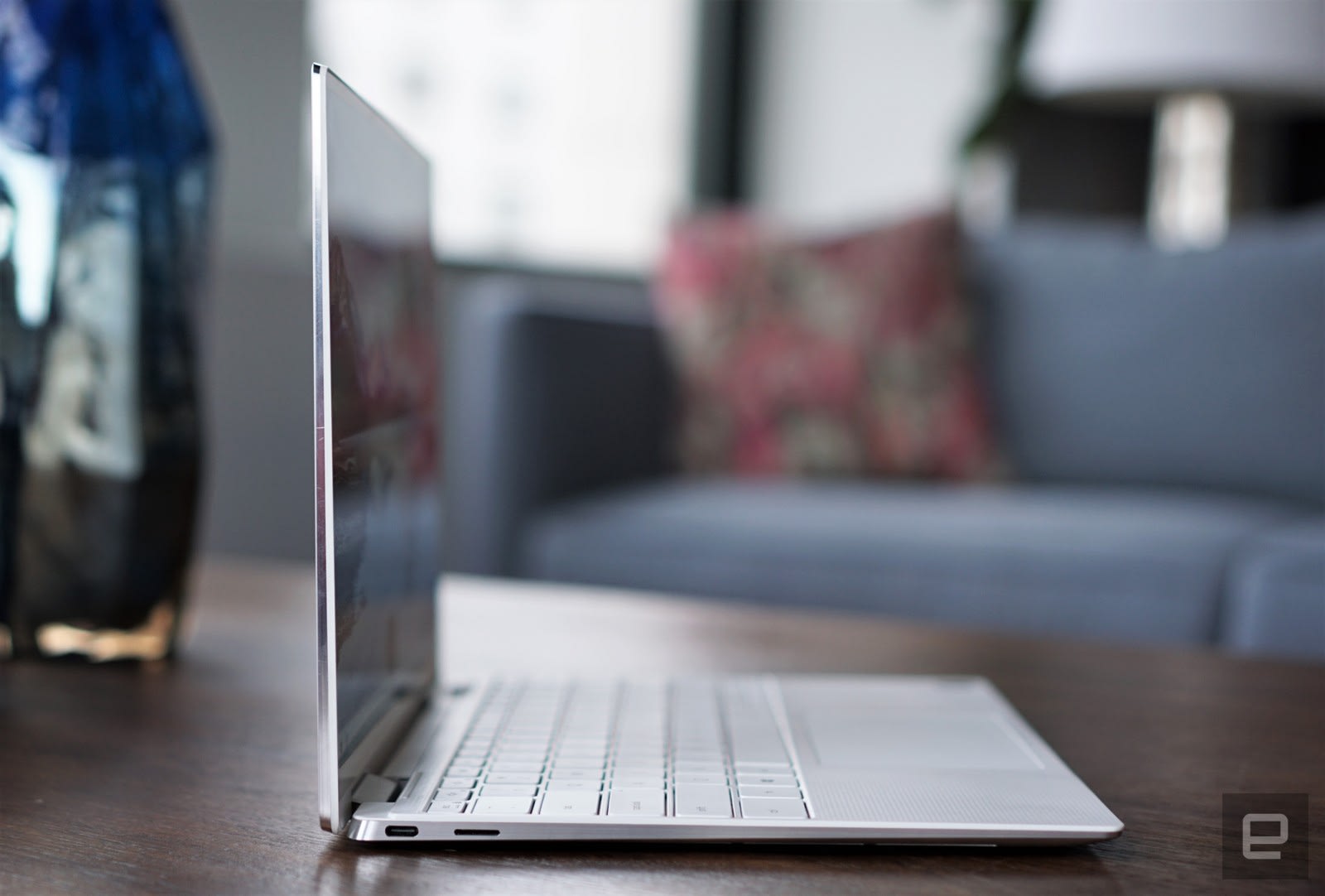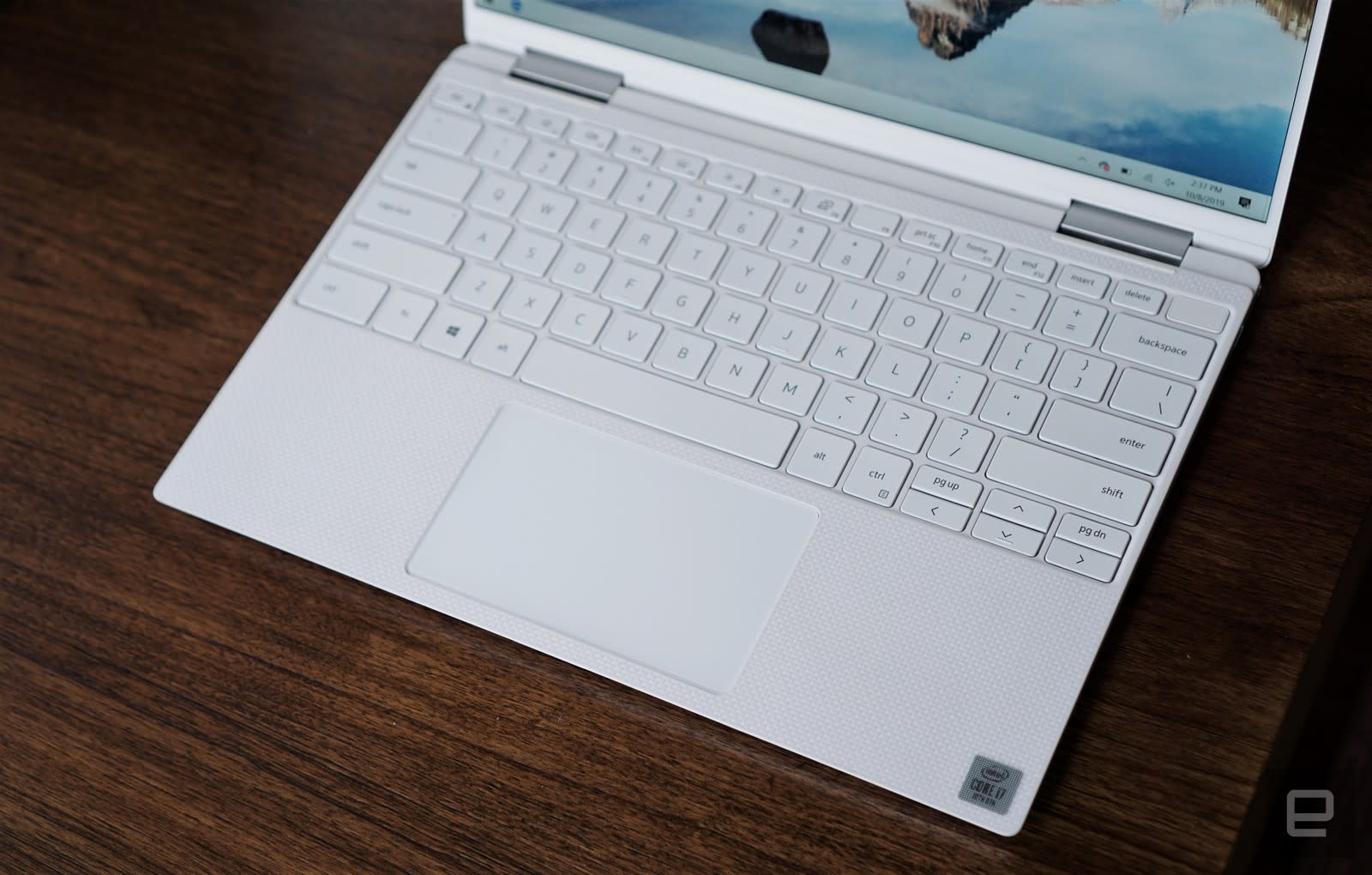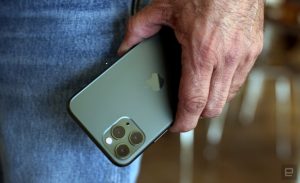I’ll admit I’ve been eager to test the XPS 13 2-in-1 ever since I got my hands on it earlier this year. It was one of those rare gadget love-at-first-sight moments: Just by looking at it, you can tell that it’s more refined than the previous generation 2-in-1 and the plain XPS 13. It’s impressively thin, tapering between 11mm and 7mm, and its rotating hinges now lay flat underneath the monitor. The last 2-in-1 had some ugly vertical hinges that made it feel extra tall. Those changes, along with some other design tweaks, helped bring the screen closer to the keyboard. To my eye, that makes the laptop look cleaner overall. And yes, just to confirm, it also features a tiny 720p webcam sitting above the screen, not below like on the last version.
There’s an air of sophistication around the XPS 13 2-in-1 that’s hard to put into words, but you’ll notice it as soon as you feel it. Its unibody aluminum case feels strong and elegant. And even though it’s slightly heavier than the traditional model, at 2.9 pounds it still feels light and easy to hold. And like every 2-in-1 laptop, you can fold the screen into a tent formation or into a large tablet. Dell’s new hinge makes the entire process much smoother than before: It opens up easily and comes to a slight pause in laptop mode. All it takes is a slight push further to keep the screen going all the way around.
The new 13.4-inch display also looks gorgeous. It’s a bit taller than before, thanks to a 16:10 aspect ratio, and it’s available with 1080p or 4K resolution. Both screens feature HDR and Dolby Vision, which helps make supported video content pop off the screen a bit more by adding higher levels of peak brightness and more-nuanced darks. The only downside is that there’s no OLED option, but that’s still pretty rare for 13-inch notebooks.
It’s clear that Dell learned a lot from its issues with the last XPS 13 2-in-1. This model doesn’t feel like a downgrade from the standard XPS 13 — the previous version, on the other hand, wasn’t as sleek, and it was significantly underpowered. Now the 2-in-1 is running the same 10th-generation Intel processors as the traditional model. Because of that, Dell had to give up on its previous fanless design to add a new cooling system, but I think the trade-off is worth it. The 2-in-1 didn’t have any trouble keeping up with my daily workload, which involves juggling dozens of browser tabs, image-editing apps, Spotify, Slack and Evernote. It also helps that the fans sound like a gentle breeze when it’s under load; there’s not much high-pitched whining like we hear on other ultraportables.
Another benefit to using Intel’s latest 10th-gen processors: The XPS 13 2-in-1 includes the company’s updated Iris Plus graphics. I saw a wide range of performance in Overwatch. In some levels it reached a smooth 55 to 65 fps at 720p with low settings, but in some firefights it went below 25 fps. The graphics will likely be fine for less-demanding games like Minecraft and The Sims. At the very least, it represents a significant leap past any of Intel’s previous integrated graphics. One issue worth noting: The 3DMark benchmark refused to run, citing some driver errors. We didn’t have any trouble with actual games, but this might be a sign that Intel needs to step it up with its drivers.
It’s hard to knock a super thin laptop for not being able to play many games well. But then again, we’ve also seen ultraportables this year like the ASUS ZenBook S13, which is even lighter than the XPS 13 2-in-1 and has dedicated NVIDIA graphics (albeit a weak MX150 GPU).
You can also blame the new thinner case for the laptop’s revamped Maglev keyboard, which now offers a shorter 0.7mm key travel, about half as much as the XPS 13. Now, hear me out: I was ready to scoff at this keyboard too, but then I actually used it. You still get a decent amount of feedback while typing, and it remains a far better experience than Apple’s completely flat MacBook keyboards. Dell also spread the keyboard out wider with larger keycaps so that it reaches the edges of the laptop. That makes for an almost desktop-like typing experience.
Dell’s Precision trackpad is also 19 percent larger than before, giving you more room for swiping around and making multitouch gestures. I found it to be effortlessly smooth, and very responsive. I used the XPS 13 2-in-1 for the entirety of Microsoft’s recent Surface event, and I had no issue banging out a 90-minute liveblog and several hands-ons with it. The only potential issue was that my typing sounded extra loud during quieter moments, which wasn’t the case with the standard-issue XPS 13.





